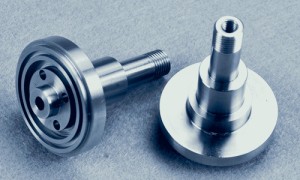How to order CNC parts?
Views: 665 Update date: Jul 19,2024
In today's advanced manufacturing environment, CNC (Computer Numerical Control) parts are widely used across various industries due to their precision, accuracy, and efficiency. Ordering CNC parts can be a straightforward process if you follow the right steps. Here's a guide on how to order CNC parts effectively.
Dimensions: Measure or specify the exact dimensions of the part you need.
Materials: Select the material that best suits your application, such as aluminum, steel, plastic, or composites.
Quantity: Determine the number of parts you require.
Tolerances: Specify the acceptable range of variation in dimensions.
Surface Finish: Define the desired surface finish, such as polished, anodized, or painted.
Experience: Look for manufacturers with extensive experience in CNC machining.
Capabilities: Check if the manufacturer has the necessary equipment and technology to produce your parts.
Quality Control: Ensure the manufacturer has a robust quality control system to guarantee the accuracy and precision of the parts.
Delivery Time: Inquire about the manufacturer's lead time and delivery schedule.
Drawings: Provide CAD drawings or sketches of the part's design.
Material Specification: Clearly specify the material type, grade, and any special requirements.
Tolerances: List the dimensional tolerances for each critical feature.
Surface Finish: Specify the desired surface finish and any post-processing requirements.
Material Cost: The cost of the raw material used to produce the parts.
Labor Cost: The cost of labor and machining time required to produce the parts.
Overhead: Any additional costs associated with the production process, such as tooling, inspection, and packaging.
Ordering CNC parts can be a simple process if you follow these steps and partner with a reliable manufacturer. By clearly defining your requirements, providing detailed specifications, and following up regularly with the manufacturer, you can ensure that you receive the precise and reliable CNC parts you need for your application.
Prev: What is the difference between high volume and low volume manufacturing?
Next: What is prototype machining?
1. Determine Your Requirements
The first step in ordering CNC parts is to clearly define your requirements. Consider the following factors:Dimensions: Measure or specify the exact dimensions of the part you need.
Materials: Select the material that best suits your application, such as aluminum, steel, plastic, or composites.
Quantity: Determine the number of parts you require.
Tolerances: Specify the acceptable range of variation in dimensions.
Surface Finish: Define the desired surface finish, such as polished, anodized, or painted.
2. Find a Reliable CNC Manufacturer
Once you have a clear understanding of your requirements, it's time to find a CNC manufacturer that can fulfill your needs. Here are some tips to consider:Experience: Look for manufacturers with extensive experience in CNC machining.
Capabilities: Check if the manufacturer has the necessary equipment and technology to produce your parts.
Quality Control: Ensure the manufacturer has a robust quality control system to guarantee the accuracy and precision of the parts.
Delivery Time: Inquire about the manufacturer's lead time and delivery schedule.
3. Provide Detailed Specifications
When placing your order, provide the manufacturer with detailed specifications of your CNC parts. This includes:Drawings: Provide CAD drawings or sketches of the part's design.
Material Specification: Clearly specify the material type, grade, and any special requirements.
Tolerances: List the dimensional tolerances for each critical feature.
Surface Finish: Specify the desired surface finish and any post-processing requirements.
4. Discuss Pricing and Terms
Negotiate the pricing and terms of your order with the manufacturer. Consider factors such as:Material Cost: The cost of the raw material used to produce the parts.
Labor Cost: The cost of labor and machining time required to produce the parts.
Overhead: Any additional costs associated with the production process, such as tooling, inspection, and packaging.
Payment Terms: Agree on the payment terms, such as upfront deposit, partial payments, or full payment upon delivery.

5. Place the Order and Follow Up
Once you have agreed on the pricing and terms, place your order with the manufacturer. Ensure that you have a clear understanding of the delivery schedule and any milestones in the production process. Follow up regularly with the manufacturer to ensure that your order is being processed as expected.6. Inspect and Test the Parts
Upon receipt of your CNC parts, inspect them carefully to ensure they meet your specifications. Perform any necessary tests to verify their accuracy, precision, and functionality. If any issues are found, contact the manufacturer immediately to resolve them.Ordering CNC parts can be a simple process if you follow these steps and partner with a reliable manufacturer. By clearly defining your requirements, providing detailed specifications, and following up regularly with the manufacturer, you can ensure that you receive the precise and reliable CNC parts you need for your application.

